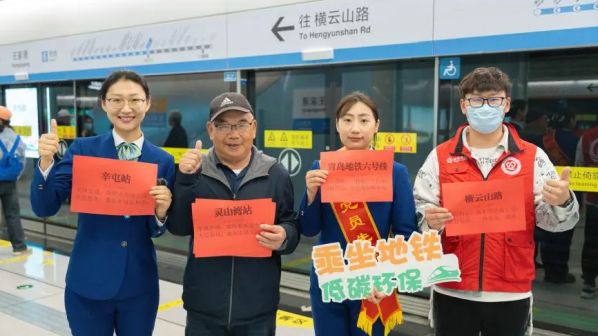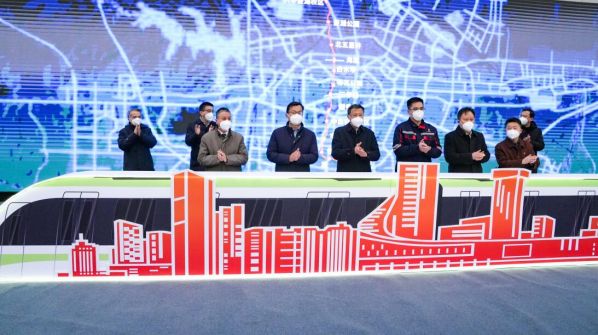THE Chinese city of Qingdao opened the first phase of metro Line 6 on April 26. This is the first metro line in China to deploy the domestically-developed TACS train control system, which enables full automation at Grade of Automation 4 (GoA4).
The 30.8km line has 21 stations, running from Shengtaiyuan in the north to Xintun Road in the south. High-speed passengers are able to transfer to the new line at Qingdao West station as well as from six other metro lines. The line carried more than 50,000 passengers on its first day of operation and offers an end-to-end journey time of 50 minutes.
The line cost an estimated Yuan 17.9bn ($US 2.47bn) to build and is operated with a fleet of 29 six-car type B1 trains built by CRRC Qingdao Sifang.
Construction of the second phase of Line 6 is underway. This will add another 13.9km and 10 stations, running west from Xintun Road to Qingxi.
TACS
CRRC also developed TACS, which it says incorporates the interlocking and zone control functions of conventional lineside CBTC equipment in an onboard distributed control system, transforming the train into the controlling entity. This has the potential to shorten headways between trains and also minimise construction costs due to a reduction in lineside equipment.
Timetables for automatic train operation (ATO) are downloaded to each train, which can automatically select the optimal route. Trains in adjacent moving block sections share their position while trains send instructions directly to point machines to activate turnouts.
The movement authority and automatic train protection (ATP) functions of TACS are based on the position and speed of the train in front. Artificial intelligence (AI) is used to identify the optimal speed profile.
Fault information is transmitted between the brake control unit and the ATO system, meaning that any adjustments required to the speed curve in case of delay or system malfunction are made autonomously and communicated to all trains. Track-mounted balises enable trains to identify the precise location where they must come to stand in stations and depots.
Other innovations
In another innovation for the project, six of the stations have been constructed using prefabricated concrete sections weighing a total of 120,000 tonnes. Jiudingshan Road uses a 220m prefabricated section on the 268m station, consisting of 590 separate components and weighing 24,800 tonnes. It is described as the largest such station structure in China.
Prefabrication has also been used in the construction of platforms, stairs, and substations. The line is equipped with devices to store energy produced during regenerative braking, which are estimated to save around 6 million kWh of electricity annually. Solar panels have been installed at Hengyunshan Road station and the Jumashan depot. Prefabricated slab track and a multi-level absorbing track bed are also helping to significantly reduce noise emissions from the line while AI, Internet of Things and visual recognition technologies are helping to quickly identify faults and inform maintenance practices.
“We teamed up with Qingdao Metro Group to carry out research on prefabricated assembly technology for metro stations,” Mr Li Yulong, project secretary at China Railway First Bureau, told China News Network. “We successfully solved technical problems such as the production, manoeuvring and transport of large-volume, non-prestressed concrete components. At the same time, we used three-dimensional laser scanning and BIM technologies to ensure assembly accuracy was delivered with millimetre precision.”
For detailed data on Chinese metro projects, subscribe to IRJ Pro.


